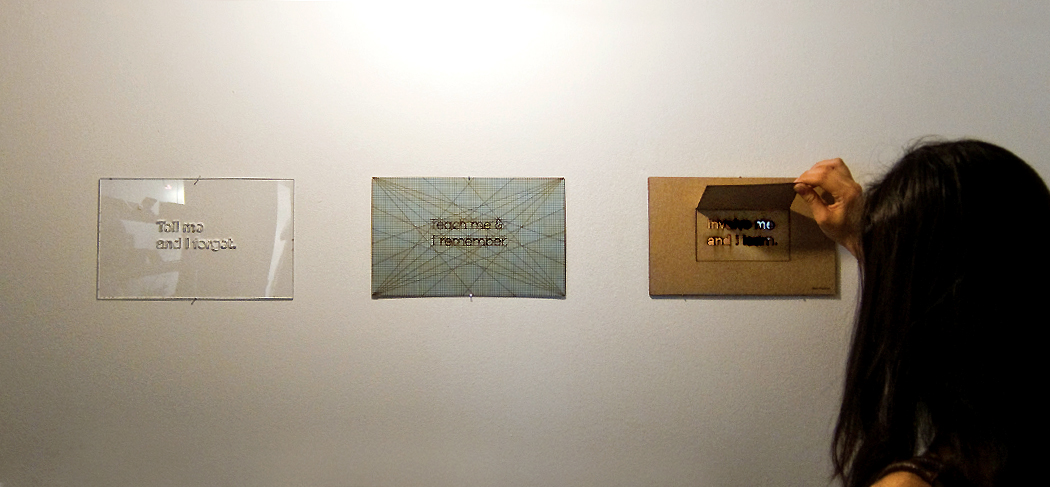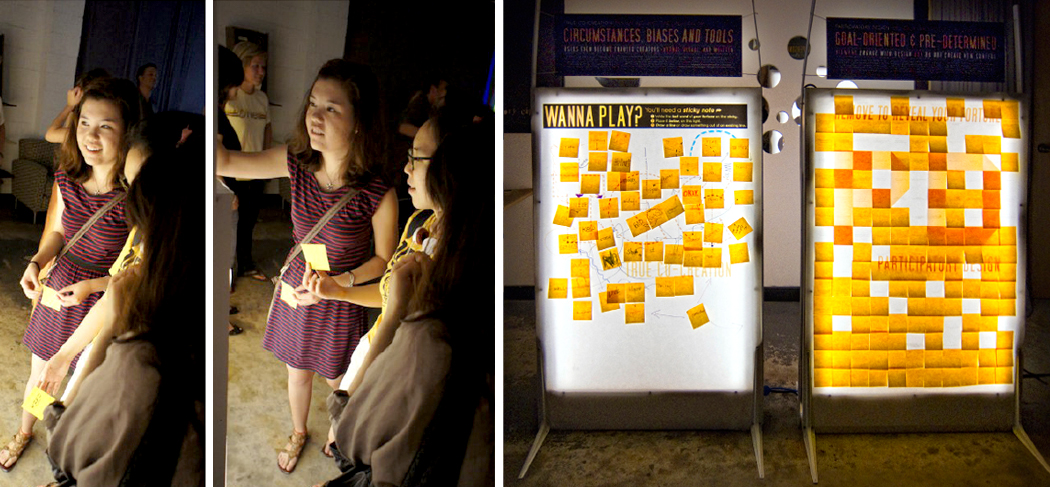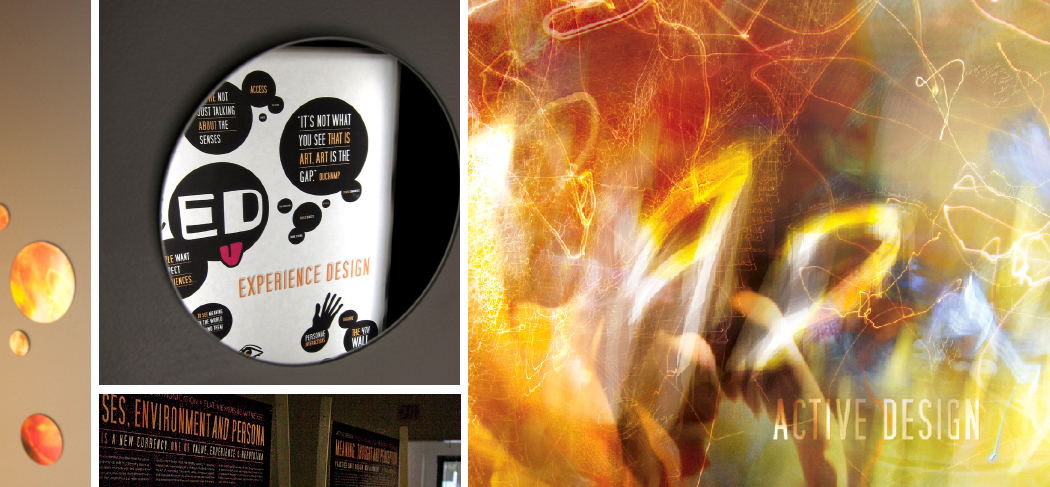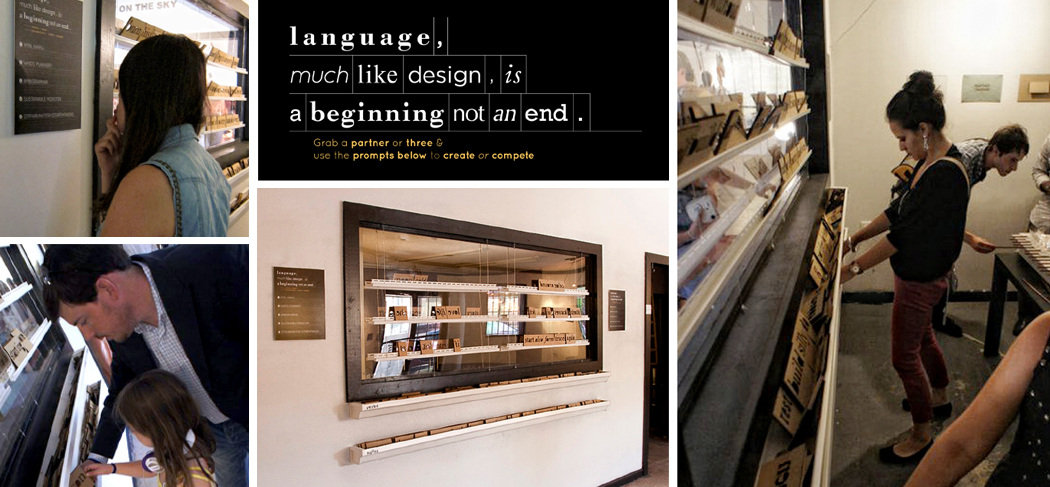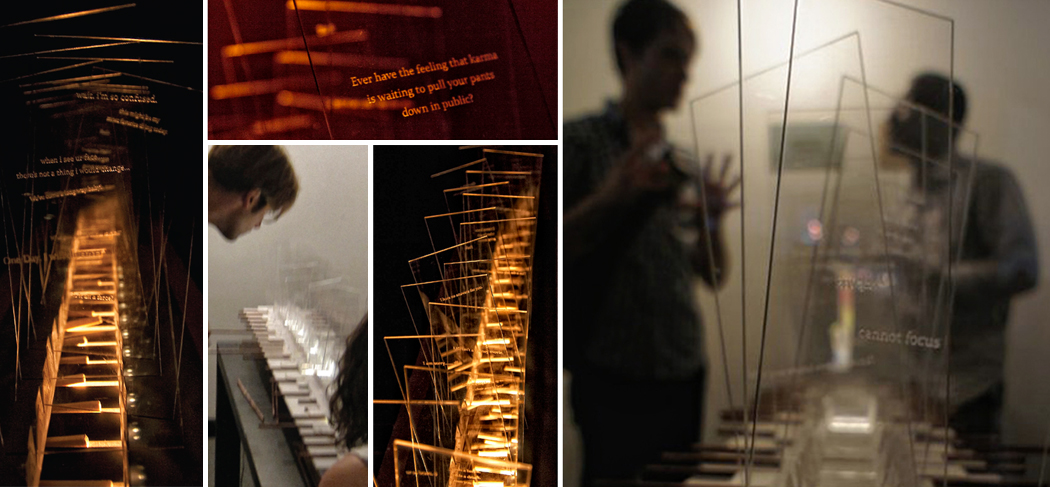Adaptive Design for Visual Communicators: Reexamining Relationships and Making Theory Apply
Project: MFA Thesis exhibition and paper (2011)
Summary of exhibition: Designed and built a series of interactive displays to communicate the four theories explained in my thesis.
Abstract: Culture grows increasingly participatory, enabled by the onset of new technologies. Meanwhile, psychology’s understanding of motivations deepens, revealing missed opportunities in design practice. To equip visual communicators with tools for progress, I synthesized four basic adaptive strategies to encourage participatory thinking and holistic process, embracing both the designer and the user as experts. The following methods reframe techniques and contextualize terms so they are accessible and applicable. Active Design echoes principles of gestalt and semiotics theories but goes further, calling designers to not only guide but also challenge users intellectually and visually. Experience Design recognizes user witness as opportunity, adding non-traditional notions of visual communication, such as personae interactions. Participatory Design involves users through interactions based on goal-oriented or pre-determined paths. This differs from co-creation, as users engage with, but do not create, content. With True Co-Creation, users actually create content. The design of True Co-Creation occurs in forming conditions and biases within which users become partners in the process of creation. The result of adaptation will be a new breed of visual communicator, one who is a relational thinker, who serves as both brand and consumer advocate. Read the whole work online.
Thesis committee: Robert Newman (Chair), Sharokin Betgevargiz, Devin O’Bryan

